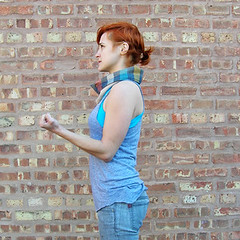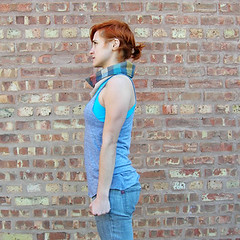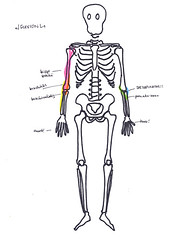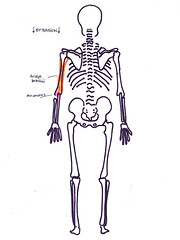Flexion and extension is probably what you think when you think what the elbow does.
What movements happen at this joint?
Flexion is when you pull your forearm toward your upper arm, decreasing the angle between the two segments like the definition of flexion says. Or more simply, when you bend your arm. Extension is when you straighten your arm. That is, you increase the angle between your forearm and upper arm by pulling the former away from the latter.
So you see the difference between a hinge joint, which the elbow is, and a ball and socket joint, which the shoulder is. You can move your shoulder six ways from Sunday—flex, extend, abduct, adduct, rotate in and out— but the elbow is pretty much open and shut.
What muscles make these movements happen?
The muscles that flex your forearm are your biceps brachii, brachialis, brachioradialis, pronator teres and supinator, all anterior muscles that pull the forearm toward the upper arm when they contract. The muscles that extend your forearm are your anconeus and triceps brachii, both posterior muscles that pull the forearm back when they contract.
What exercises make these muscles work?
Biceps brachii, brachialis, and brachioradialis can all be exercised with arm curls, pull ups, upright rows, and rock climbing, all of which involve flexing the forearm. Exercises for pronator teres and supinator involve their primary movements, pronation and supination, and will be covered in the next post.



